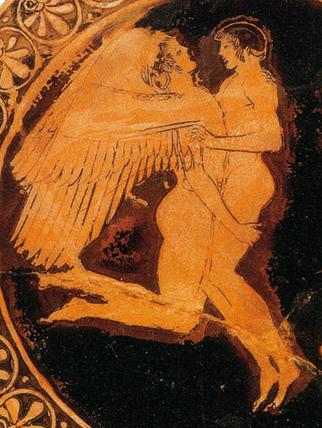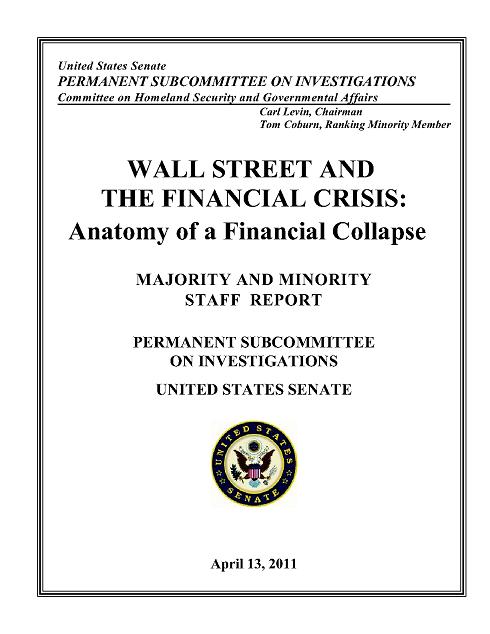Here’s a review of Harold Bloom’s The Anatomy 0f Influence in The National Post. Bloom’s relationship to Frye has always made me uneasy, and Frye himself seemed to wrestle with it, as you can see from a previous post here. If anyone else wants to weigh in, that’d be great. I’ll keep my eye out for other reviews.
Monthly Archives: May 2011
Video of the Day: Comet Hits the Sun
httpv://www.youtube.com/watch?v=cmw-n81DqR8
From NASA. The event occurred on May 10-11.
Frye at the Movies: Keystone Kops
httpv://www.youtube.com/watch?v=a2xTwyPrxWw
Since my trip to Moncton, I cannot stop thinking about the Capitol and the Empress Theatres, still standing and refurbished, where Frye would have seen the movies of his childhood. He loved silents, and he mentions seeing the Keystone Kops, so here’s one of their two-reelers, Our Dare-Devil Chief, from 1915.
H. Rider Haggard
httpv://www.youtube.com/watch?v=GE3Vosi_iY8
A clip from the very cheesy Hammer Films 1965 adaptation of She, with the imperious Ursula Andress playing “She who must be obeyed”
H. Rider Haggard died on this date in in 1925 (born 1856).
Frye in The Secular Scripture on the archetype of the earth-mother and Haggard’s She:
In the theme of the apparently dead and buried heroine who comes to life again, one of the themes of Shakespeare‘s Cymbeline, we seem to be getting a more undisplaced glimpse of the earth-mother at the bottom of the world. In later romances there is another glimpse of such a figure in Rider Haggard’s She, a beautiful and sinister female ruler, buried in the depths of a dark continent, who is much involved with various archetypes of death and rebirth. In the Xenophon of Ephesus the hero meets an old man who continues to love and live with his wife even though she has been embalmed as a mummy: similar themes are also in Haggard’s story. Embalmed mummies suggest Egypt, which is preeminently the land of death and burial, and largely because of its Biblical role, of descent to a lower world. (CW 18, 75-6)
Frye on Luck
Odysseus and Aeolus
Yet another charm to chase away the spirits of bad luck today. Luck, good and bad, Frye says in The Secular Scripture, is infectious:
The most basic term for this current of energy is luck (Icelandic gaefa). Luck is highly infectious: the lucky man can always form a comitatus or group of devoted followers around him. Once his he has lost his luck, he finds that bad luck is equally infectious: the unlucky man must be avoided like the plague, because he in a sense is the plague. When Ulysses in Homer returns to Aeolus to explain that through no fault of his own he has run into misfortune, Aeolus tell him to clear out, that an unlucky man is hated by the gods, and he will have nothing more to do with him [Odyssey, bk. 10, ll. 70-75]. (CW 18, 45-6)
TGIF: “Royal Pudding”
The Prince and Princess of Canada
South Park sends up the royal wedding by setting it in Canada. As always when it comes to South Park portrayals of Canada, the joke is that massive ignorance about us means anything can be attributed to us. We speak with sort-of English accents and have an insatiable appetite for fart humor. Our favorite expression is “You’re a dick.” And, of course, our royal weddings have traditions all their own, including showering the royal couple with Captain Crunch as they make their way down the aisle. You can watch the episode here.
Here’s Frye in A Natural Perspective on the genesis of sentimentality regarding the royal family which continues to this day, even as the royals themselves begin to look more and more like b-list celebrities. The “fairy tale” aspect of a royal wedding retains an absurdly sentimental hold upon the public imagination, even thirty years after Diana Spencer’s Grimm’s fairy tale version of it:
There is a famous story about the reaction of a Victorian lady to Antony and Cleopatra: “How different from the domestic relations in our own royal family.” The basis of the remark is the mental attitude of the audience appealed to by the sentimental domestic comedy of the eighteenth and nineteenth centuries. (CW 28, 208)
The enduring literary jimmying of this kind of sentiment is pretty remarkable. If, as Wilde says, life imitates art, it could do better than this.
FM
httpv://www.youtube.com/watch?v=Yl7zf_qApoA
It’s Friday the 13th and it seems prudent to be impudent in order to drive off any threat of bad luck.
In related news, it’s also the 72nd anniversary of the launch of the first FM radio station in Bloomfield, Connecticut.
That calls for Steely Dan — a band whose career unfolded during the golden years of FM radio — performing “FM” live.
It’s always said that they don’t write them like this anymore. But this time it’s true. They don’t. And before Steely Dan they didn’t really write them like this at all. This was in its heyday the ultimate geek band: smart, sardonic, exhibitionistically introverted, and really really really seriously good musicians. The kind of highly trained geek musicians where other highly trained but not yet as successful geek musicians would sit and listen for hours to transcribe their instrumental solos. And that would constitute a totally hot Saturday night. Yes, Walter Becker and Donald Fagan are older now — Fagan can’t quite sustain the implied sneer in his vocal delivery with the steady conviction he once could. But this is still Steely Dan. It’s going to be more memorable than just about anything else you’re likely to encounter today.
So with Steely Dan as our talisman, bad luck doesn’t have much of a chance. In fact, as of today, invoking Steely Dan’s singular power, we’re banishing bad luck for a period lasting no fewer than seven years.
I’ll trundle some Frye out later today which will be at least tangentially related to all of this.
And then our victory over bad lack shall be complete.
Video of the Day: The Rap on Rap
Jon Stewart has a look at the manufactured outrage on the right over the rapper Common reading a poem at the White House. You can see a portion of his slapdown here. As with driving, it is now apparently an offence to Rap While Black.
What the clip doesn’t include, however, is Stewart’s own rap on the issue, which is a nice reminder that it really is a form of “flyting.” You can see the entire segment at Comedy Central (in Canada, at the Comedy Network).
While we’re at it, it should be added that even the most reptilian demagogue understands that Common is well known to be an exceptionally gentle man who has always called for peace and tolerance. This is still more barely coded racism from the RNC/FNC conglomerate, whose agenda (sinecured angry clowns like Rove and Hannity aside) seems increasingly to be advanced by indignant bleached blondes.
Some representative work from this very dangerous black man after the jump.
Quote of the Day: “The People vs Goldman Sachs”
Matt Taibbi, who continues a grueling one-man campaign against Goldman Sachs in the popular press, reports in the latest Rolling Stone on the newly released Levin Report, Wall Street and the Financial Crisis: Anatomy of a Financial Collapse, by the Senate Subcommittee on Investigations, chaired by Democrat Carl Levin of Michigan and Republican Tom Coburn of Oklahoma.
A sample:
To fully grasp the case against Goldman, one first needs to understand that the financial crime wave described in the Levin report came on the heels of a decades-long lobbying campaign by Goldman and other titans of Wall Street, who pleaded over and over for the right to regulate themselves.
Before that campaign, banks were closely monitored by a host of federal regulators, including the Office of the Comptroller of the Currency, the FDIC and the Office of Thrift Supervision. These agencies had examiners poring over loans and other transactions, probing for behavior that might put depositors or the system at risk. When the examiners found illegal or suspicious behavior, they built cases and referred them to criminal authorities like the Justice Department.
* * * *
But beginning in the mid-Nineties, when former Goldman co-chairman Bob Rubin served as Bill Clinton’s senior economic-policy adviser, the government began moving toward a regulatory system that relied almost exclusively on voluntary compliance by the banks. Old-school criminal referrals disappeared down the chute of history along with floppy disks and scripted television entertainment. In 1995, according to an independent study, banking regulators filed 1,837 referrals. During the height of the financial crisis, between 2007 and 2010, they averaged just 72 a year.
But spiking almost all criminal referrals wasn’t enough for Wall Street. In 2004, in an extraordinary sequence of regulatory rollbacks that helped pave the way for the financial crisis, the top five investment banks — Goldman, Merrill Lynch, Morgan Stanley, Lehman Brothers and Bear Stearns — persuaded the government to create a new, voluntary approach to regulation called Consolidated Supervised Entities. CSE was the soft touch to end all soft touches. Here is how the SEC’s inspector general described the program’s regulatory army: “The Office of CSE Inspections has only two staff in Washington and five staff in the New York regional office.”
* * * *
Goldman and the other banks argued that they didn’t need government supervision for a very simple reason: Rooting out corruption and fraud was in their own self-interest. In the event of financial wrongdoing, they insisted, they would do their civic duty and protect the markets. But in late 2006, well before many of the other players on Wall Street realized what was going on, the top dogs at Goldman. . .started to fear they were sitting on a time bomb of billions in toxic assets. Yet instead of sounding the alarm, the very first thing Goldman did was tell no one. And the second thing it did was figure out a way to make money on the knowledge by screwing its own clients. So not only did Goldman throw a full-blown “bite me” on its own self-righteous horseshit about “internal risk management,” it more or less instantly sped way beyond inaction straight into craven manipulation.
“This is the dog that didn’t bark,” says Eliot Spitzer, who tangled with Goldman during his years as New York’s attorney general. “Their whole political argument for a decade was ‘Leave us alone, trust us to regulate ourselves.’ They not only abdicated that responsibility, they affirmatively traded against the entire market.”
“They affirmatively traded against the entire market.” That’s the case against Goldman Sachs: fraud on an unimaginable scale, selling their clients what they knew to be toxic assets, and then betting on the failure of those assets, which not only contributed to the collapse of the financial market, but allowed Goldman to enrich itself as a result. It is as revolting as it is frightening. And, if anything, the company has come out of it more powerful than ever: too big to fail and too rich to prosecute.
Edward Lear
httpv://www.youtube.com/watch?v=FVU_6GLZ-5Q&feature=related
“The Owl and the Pussycat”: listen right through to the end and you’ll be rewarded with some of the sweetest, most spontaneous and relevant literary criticism you’re ever likely to encounter
Today is Edward Lear‘s birthday (1812-1888).
Frye cites Lear to define the boundaries of satire in “The Nature of Satire”:
Again, we said that the humour of gaiety was the other boundary of satire. But as Juvenal truly said that whatever men do is the subject of satire, and that in consequence it is difficult not to write it, it follows that most humorous situations are at least indirectly satiric. Non-satiric humour tends toward fantasy: one finds it most clearly in the fairy worlds of Lewis Carroll, Edward Lear, and Walt Disney, in Celtic romance and American tall tales. Yet even here one can never be sure, for the humour of fantasy is continually pulled back into satire by means of that powerful undertow which we call allegory. The White Knight in Alice who felt that one should be provided for everything, and therefore put anklets around his horse’s feet to guard against the bites of sharks, may pass without challenge. But what are we to make of the mob of hired revolutionaries in the same author’s Sylvie and Bruno, who got their instructions mixed and yelled under the palace windows: “More taxes! Less bread!” Here we begin to smell the acrid, pungent smell of satire. (CW 21, 44-5)




